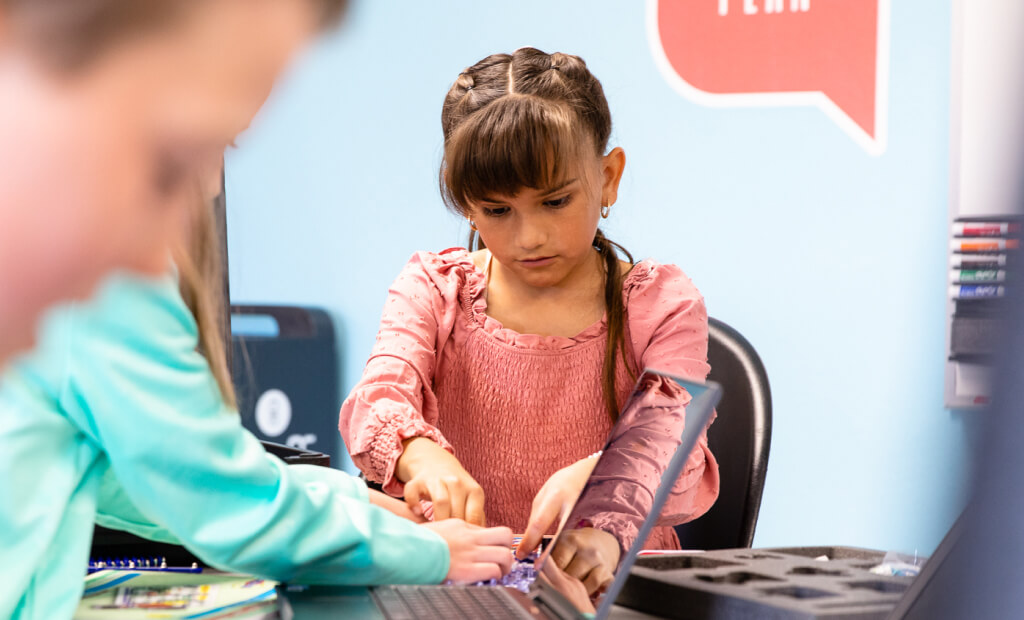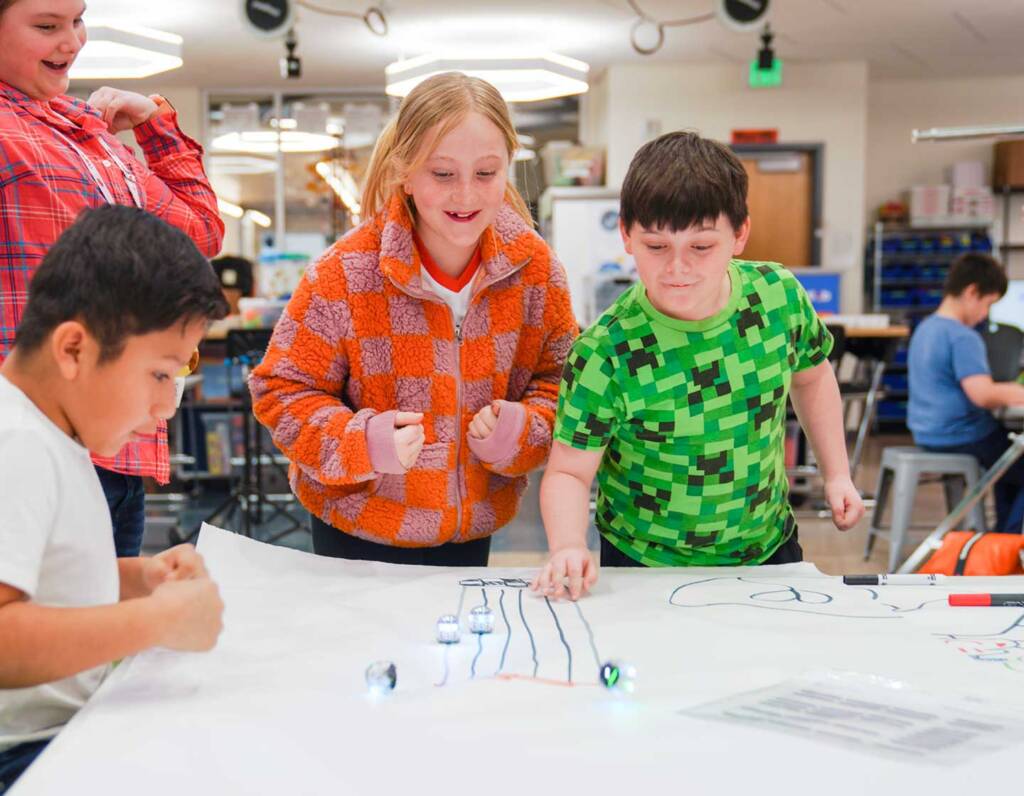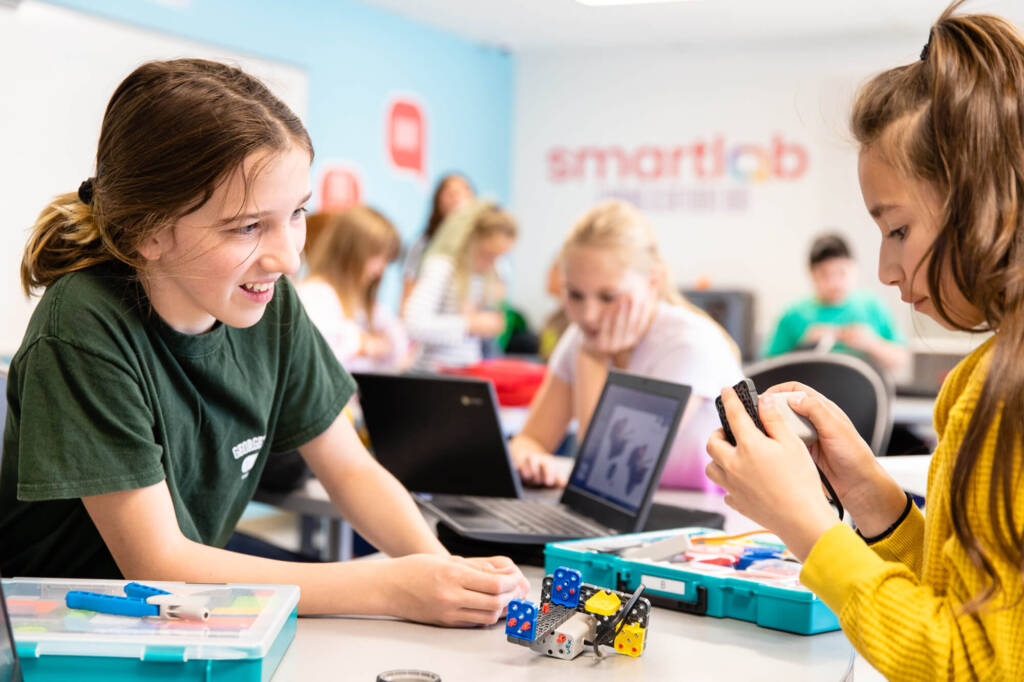Project Examples: Teaching STEM Through PBL
PBL and STEM have been around long enough to earn the dubious distinctions of:
- Having at least as many variations as letters (STEAM, STREAM, STRREAM, etc.)
- Getting boiled down to less than the sums of their parts
- Being mistaken for tired/cliché
Buzz words or not, these two aren’t going away–and they shouldn’t. STEM and PBL are complementary. If you know SmartLab at all, you know that we believe PBL is the most effective approach for teaching STEM subjects.
In this article, we’ll unpack some components of effective STEM programs and PBL programs1. We’ll follow that discussion by presenting five sample projects that highlight the complementary natures of STEM and PBL.
What Makes an Effective STEM Program or Lesson?
Ask any educator what STEM is, and you’ll likely get a response that begins with “Science, Technology, Engineering, and Math.” What comes next varies, but themes emerge when teachers and administrators describe STEM.
Effective STEM programs and lessons:
- Support a balance of skill development and knowledge building of STEM concepts and content
- Emphasize the intersection between science, technology, engineering, and mathematics
- Invite perspectives and contributions from different fields including areas that are traditionally non-STEM
- Allow learners to see themselves in STEM-related careers through experience and interaction with STEM professionals
What Makes an Effective PBL Program or Lesson?
PBL leads to effective learning when it:
- Involves learning through action, where students approach content through “hands-on” and “minds-on” projects
- Foregrounds project exhibitions
- Leverages PBL projects for knowledge building instead of just culminating demonstrations of learning
- Allows for learner-directed inquiry beyond the initial objectives of a teacher
- Fosters collaboration and creative problem-solving that requires diverse perspectives
- Encourages students to discover their interests and passions through experiential learning
Let’s look at five effective STEM + PBL project examples that approach STEM through PBL. See if you can spot the eight elements above.
STEM + PBL Example 1: MegaMaze (Let’s Go Code)
Grade Band: Primary (K-2)
Area of Exploration: Software Engineering
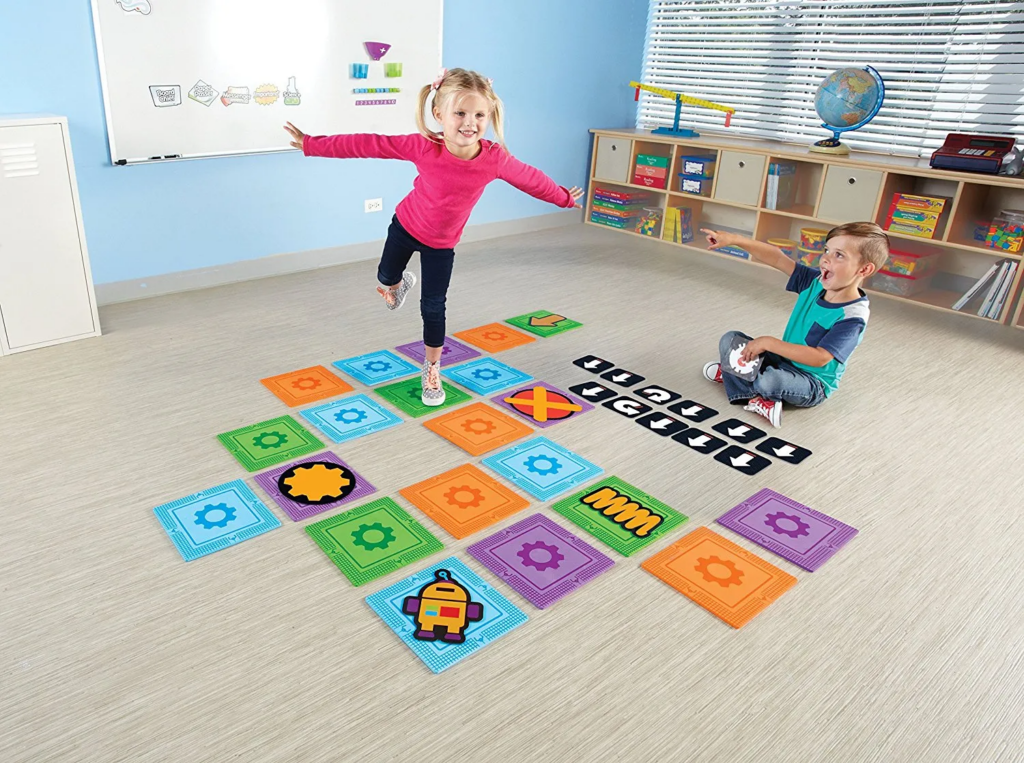
This project involves learners taking on the roles of robots, programmers, and maze designers to build introductory computer science knowledge and practice computational thinking skills.
In small groups, students plan out a maze using large foam tiles, placing various parts on certain tiles to indicate objectives for the robots to accomplish. These objectives generally relate to collecting parts to upgrade or repair the robot. Learners work together to plan out the best path for the robot using cards that show different actions and directions for the robot to turn or move.
Let’s Go Code is included in the Primary Layer available to serve K-2 learners in the SmartLab HQ. If you don’t have the foam tiles, robot parts, and printed cards, you can create paper versions of the robot parts, cards, and other pieces for a less durable option.
As students navigate their robot group members through the maze, they learn basic sequencing and take on the perspectives of others to achieve a goal.
Though simple, this project helps learners build essential STEM knowledge and skills from an early age, paving the way for more complex challenges later. Students actively approach their learning experiences with Let’s Go Code, involving their whole bodies in practicing and applying transferable coding concepts.
STEM + PBL Example 2: Protect the Animals! (Vernier Elementary Sensing Science Collection)
Grade Band: Elementary (3-5)
Area of Exploration: Scientific Data & Analysis

This project challenges learners to explore different methods of adaptation that help animals survive cold climates. As a result of that exploration, learners design and modify their own adaptations to help animals that struggle to cope with extreme temperatures.
Students must practice gathering information through research as well as collecting data using scientific sensors. In the Elementary Layer of the SmartLab, learners in grades 3-5 use Vernier Temperature sensors to collect data to determine the best methods for insulating animals from cold temperatures. If you don’t have access to the Vernier sensors for data logging, you can also measure temperature with a standard thermometer by noting temperatures at regular intervals.
Throughout the project, learners practice effective research skills by seeking out published information and collecting their own data. These experiences strengthen essential STEM skills while also supporting valuable critical thinking practices. Students draw conclusions about the effectiveness of their own invented animal adaptations and share those conclusions with their peers.
If possible, opportunities to interact with zoologists or wildlife biologists can take this project to the next level as students ask questions and share their ideas with professionals who work with animals every day.
This project can provide valuable opportunities to explore the intersections between various STEM fields. As students explore science concepts, they also make use of technology and math to collect and analyze data. They put on their engineer hats as they design and develop their solutions to providing warmth for animals in cold climates.
STEM + PBL Example 3: Tiny Houses (Arckit)
Grade Band: Middle School (6-8)
Area of Exploration: Mechanics & Structures
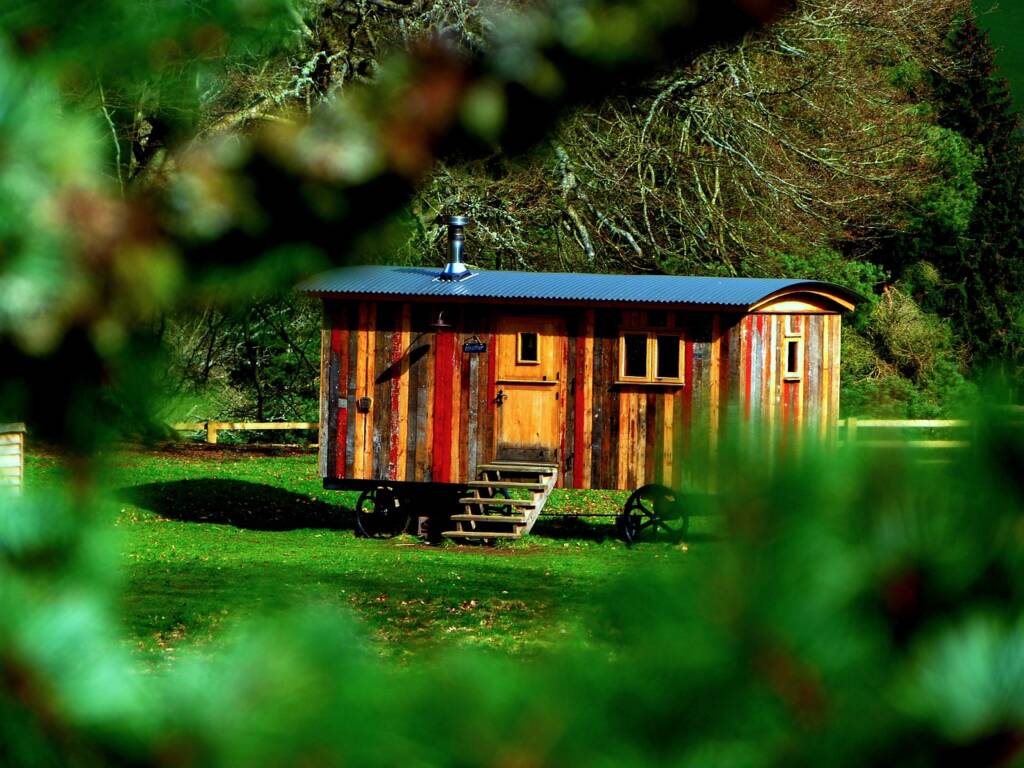
This project centers on exploring affordable housing options through architectural design. Learners research different approaches to designing tiny homes with minimal impact on the environment and then construct models of their own designs.
As students work in pairs (or small groups) on this project, they each take on important roles: project manager, architectural drafter, research coordinator, etc. Providing example responsibilities for each role can help learners understand what they need to do throughout the project.
When groups have gathered their research and identified the important criteria for a well-made tiny home, they will begin to create their designs. Their most basic designs can include simple blueprints or floor plans outlining the space used for their tiny homes. In a SmartLab, we recommend that learners build their models using Arckit components. These kits provide a reusable system for constructing small-scale models just like the ones professional architects create.
A common extension to this project is for students to create marketing materials to promote their tiny home designs. This extension emphasizes the natural connections between traditional STEM fields like architecture and engineering and the art and business aspects of marketing and advertising.
STEM + PBL Example 4: Solar Water Pasteurization (Solar Energy)
Grade Band: High School (9-12)
Area of Exploration: Environmental Technology

This project requires learners to explore multiple related concepts to design and build prototypes that can help reduce the risk of illness due to water contamination. Through this exploration, learners research the biology of microorganisms, the physics of heat and energy, and the challenges and social implications of access to clean water.
In addition to completing research using online sources, students should also collect data using various solar cooking methods, seeking to identify the best way raise the temperature of water enough to kill common microorganisms. In a SmartLab, students can make use of Vernier sensors to gather baseline data about the performance of different-sized manufactured solar ovens before creating their own designs for solar pasteurizers.
Common materials like cardboard, duct tape, and aluminum foil can be used for creating basic solar ovens for pasteurizing water. Through their research and data analysis, students may also identify other materials for testing to create the best possible design.
Extension opportunities for this project include additional research about the impacts of water contamination and other methods that might be necessary to produce pure drinking water. Students could also explore the availability of commercial water purification systems to formulate recommendations about the best systems based on different criteria (price, effectiveness, power requirements, etc.).
SmartLab Facilitators: Have you tried strategies other than PBL to teach some of the same concepts you teach in your SmartLab today? What worked? What’s working now?
Talk about it with your fellow Facilitators in the Facebook group.
These STEM + PBL examples are a sample of the hundreds available in the SmartLab LearningHub. Every project in a SmartLab explores STEM concepts through learner-centered PBL. SmartLab project starters, curated kits and equipment, and expert professional development balance skill development and exposure to STEM content.
If you are a current SmartLab customer who hasn’t made the switch to LearningHub, request more information here or reach out to your Customer Success team today.
If you don’t have a SmartLab yet, connect with a SmartLab team member or visit the resource center to learn more about bringing high-quality STEM-focused PBL to your school.
1.Obviously, there is no substitute for a deep evaluation by an experienced PBL + STEM practitioner, and lists of effective STEM and PBL program/lesson characteristics abound. Often these lists even overlap. Here, we’ve provided a brief set of commonly accepted best practices validated by CLS’s 35 years of PBL and STEM experience.
Try these linked resources if you’re looking for a more comprehensive evaluation of effective STEM programs and practices: K12 programs; undergraduate programs; both resources are from the National Science Foundation.).
Here is a more comprehensive academic evaluation of effective PBL practices (originally published in Procedia – Social and Behavioral Sciences , and PBL Works (formerly the Buck Institute) provides a useful, if lighter, set of PBL practices in their comparison of “projects” vs “PBL” here.



